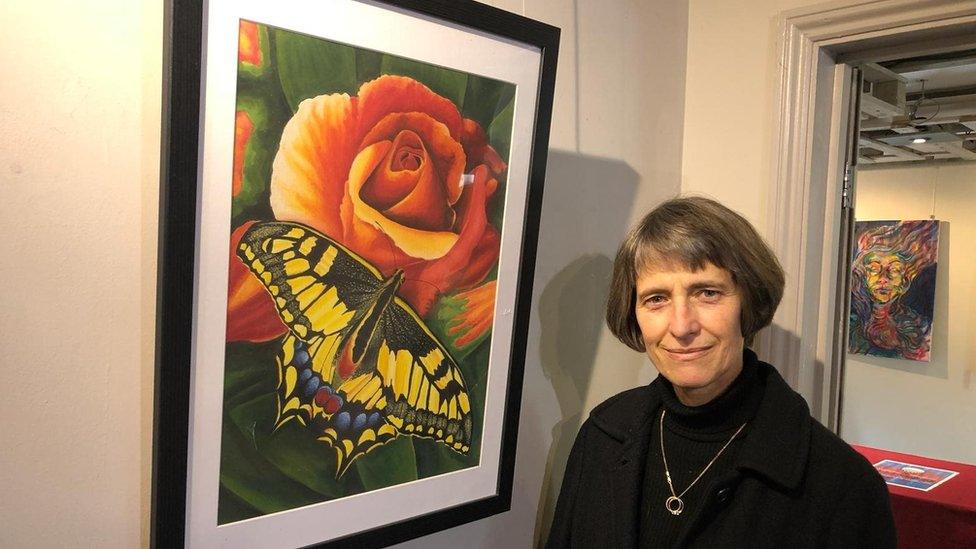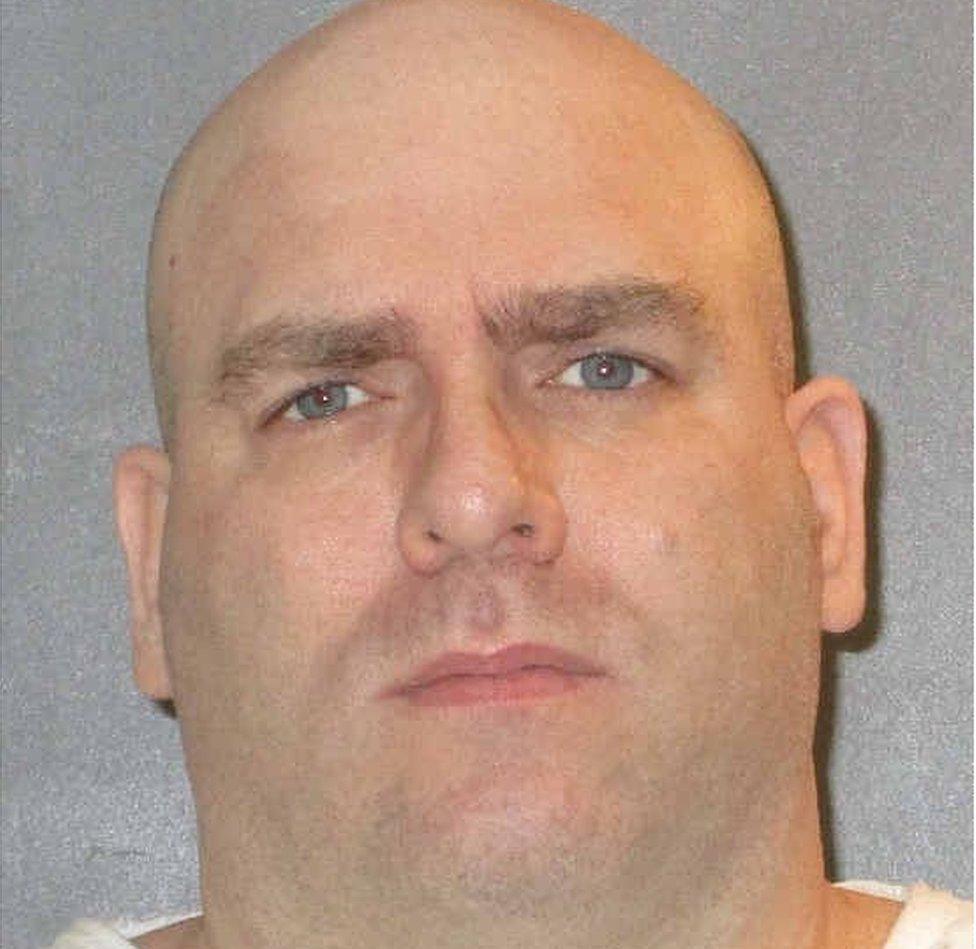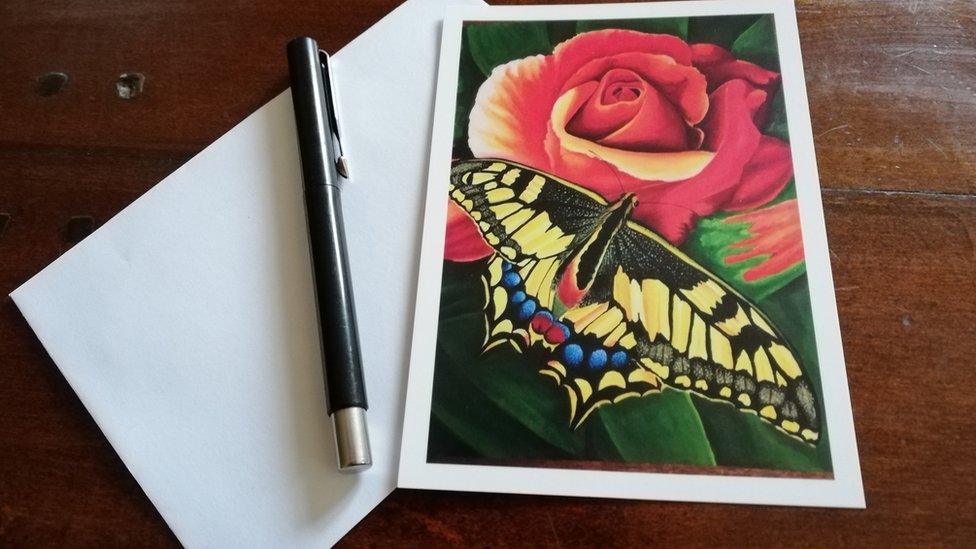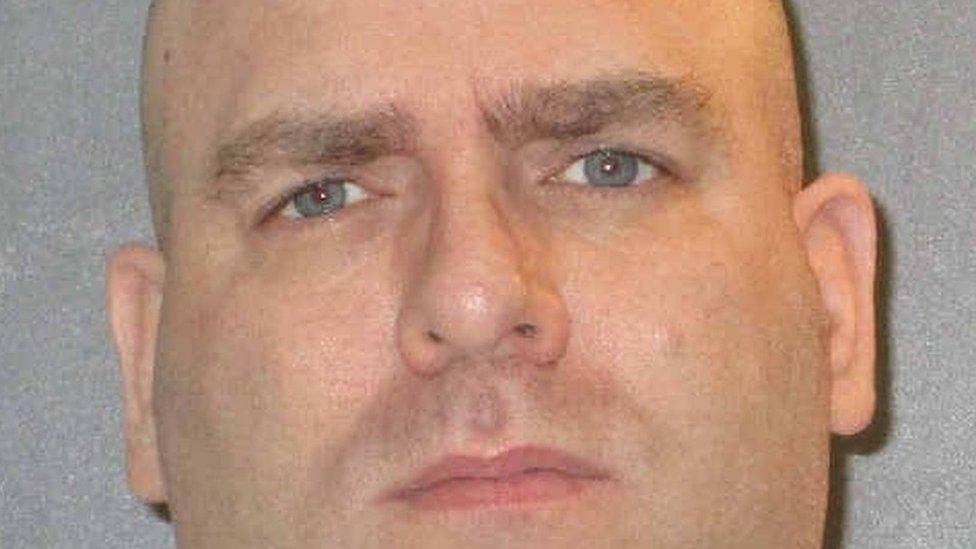Larry Swearingen: Death row inmate painted for UK cycle scheme
- Published

Susan van de Ven was one of the cycle scheme campaigners in contact with Larry Swearingen before his execution
A painting by an executed death-row prisoner in the United States has been adopted as part of a campaign for better rural cycle paths in the UK.
Larry Swearingen first became interested in the A10 cycle campaign in south Cambridgeshire through a pen-pal.
From his Texas cell he used a brush made from human hair to make a painting of a butterfly on a rose. The picture was used on cards sold for the scheme.
Swearingen was executed in August for a murder he had always denied.
The 48-year-old's lawyers had argued scientific evidence - including DNA under the victim's fingernails that was not Swearingen's - should have exonerated him.
But prosecutors said they stood by the "mountain of evidence" used to convict him of the 1998 killing of 19-year-old student Melissa Trotter.

Larry Swearingen had always maintained his innocence but he was executed in August
Swearingen was first put in touch with Ann Barnes, who lived in Meldreth, a village about 10 miles from Cambridge, in 2015, through the charity LifeLines, which supports death row prisoners by connecting them with people who will exchange letters with them.
She said the pair "got on to a wavelength very quickly".
Not long afterwards, Ms Barnes was collecting data for the cycle campaign when she spoke about Swearingen with county councillor Susan van de Ven, following which he was told of the project.
Ms Van de Ven said: "Lo and behold he wrote back right away and full of practical questions about the project, the same sort of curious questions anyone might have who wanted to see better infrastructure and safe use of cycling for locals. He just happened to be on death row."
She said it became apparent Swearingen was "incredibly open in his mind to the whole wide world outside" and had taken an interest in part because he was knocked off his bike as a child.
While continuing his ultimately unsuccessful campaign to avoid execution, Swearingen was filled in on numerous parts of the project, including a potential bridge traversing the A505 between the town of Royston and the nearby village of Melbourn.
"He was concerned about the cost, and of course the cost of these things are enormous, so very early on he had the idea he'd like to contribute to the campaign," said Ms Van de Ven.
"He suggested he could make cards because art, drawing and painting was an activity of his in his cell and he had produced artwork for different friends."

The first batch of cards sold out almost immediately
After completing the picture Swearingen got a friend to post the painting to Ms Van de Ven, who called it "a very vibrant image for someone who saw no colour and was mostly inside a small cell".
The first initial batch of cards was used to raise funds for both his final appeal against his execution and the cycle campaign.
Ms Barnes said any future funds from the cards would be used for the cycle scheme, which was the purpose of the painting.
She said the executed killer's impact extended further than the cycle scheme, not only offering her personal support, recipes and gardening tips, but writing for her Quaker group's quarterly magazine.
"My Quaker meeting really took them to their hearts. After he was executed, I had to be at home that day, but the Quaker meeting turned into a thanksgiving for the life of [Swearingen].
"Several friends said it was one of the most extraordinary meetings they've ever been to.
"So his influence was way beyond me - goodness I don't half miss him."
- Published22 August 2019
